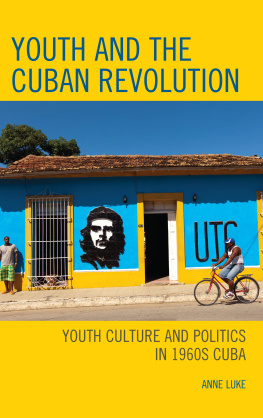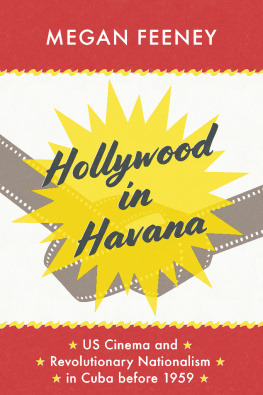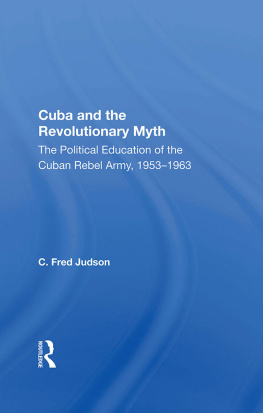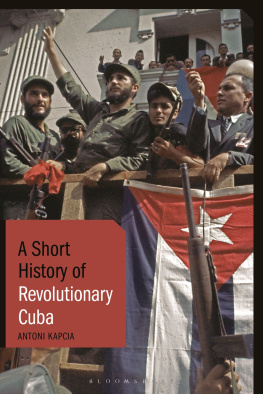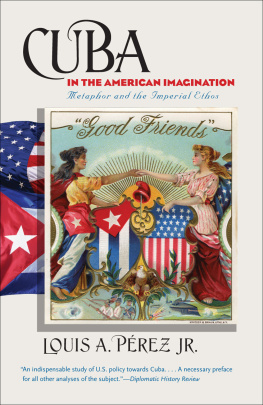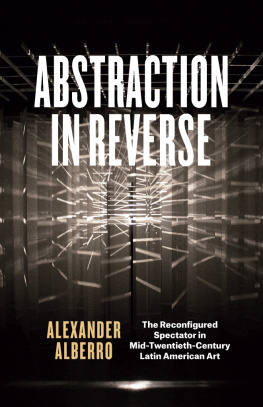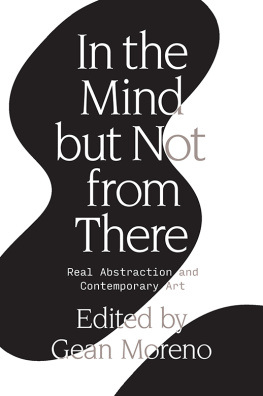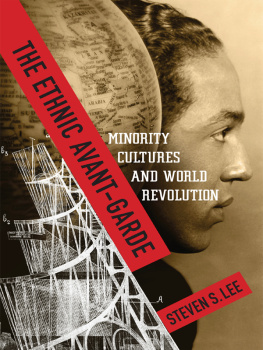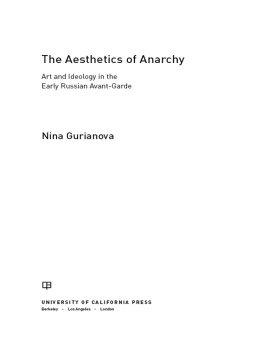Revolutionary Horizons
Revolutionary Horizons
Art and Polemics in 1950s Cuba
Abigail McEwen

Copyright 2016 by Abigail McEwen.
All rights reserved.
This book may not be reproduced, in whole or in part, including illustrations, in any form (beyond that copying permitted by Sections 107 and 108 of the U.S. Copyright Law and except by reviewers for the public press), without written permission from the publishers.
yalebooks.com/art
Designed by Leslie Fitch
Typeset by Julie Allred, BW&A
Books, Inc.
Printed in China through Oceanic
Graphic International, Inc.
Library of Congress Control
Number: 2015952891
ISBN 978-0-300-21681-3
eISBN 978-0-300-22132-9
A catalogue record for this book is available from the British Library. This paper meets the requirements of ANSI/NISO Z39.48-1992 (Permanence of Paper).
10 9 8 7 6 5 4 3 2 1
Jacket illustrations: (front) Mario
Carreo, Cielos del sur [Southern Skies], 1950 (detail of )
Frontispiece: Luis Martnez Pedro, Untitled, from the series Aguas territoriales, 1964 (detail of )
CONTENTS
ACKNOWLEDGMENTS
Among the sundry pleasures of researching this book has been the opportunity to meet so many of its central protagonists, their families, and their friends. From Havana to Paris to Miami, they have invited me into their homes, shared memories and archives, and recountedtirelessly and thoughtfullythe long decade of the 1950s. For their candor, conversations, and assistance, I thank Jrme Arcay; Susana Barciela and Manuel Gmez; Ivan and Alba Caas; Elena Crdenas Malagodi and Luigi Di Giamberardino; Rita Consuegra; the late Salvador Corratg; Geny Dignac; the late Viredo Espinosa; the late Abelardo Estorino; Clea and Sebastian Fernndez; Julia Gonzlez Forns; Carmen Herrera; Eskil Lam; Ren Llins; Toms Oliva, Jr.; Pedro de Ora; Graziella Pogolotti; the late Nicols Quintana; Mariana Ravenet Ramrez; Patricia Rivern Lee; Jos Rosabal; Zilia Snchez; Imma Mira Sempere; Christoph Singler; Ann Sitkin and Ilse Girona; Magaly Soldevilla and Martha Flora Carranza Barba; Hortensia Soriano; and the late Antonio Vidal. For their assistance in procuring images and introducing me to artists and artworks, I am indebted to a number of colleagues at galleries and auction houses: Francisco Arvalo; Ramn Cernuda; Antonio and Gabriela de la Guardia; Marta Gutirrez; Irina Levya-Prez; Jos Martnez Caas; Israel Moleiro; Gary Nader; Marysol Nieves; and Aleksandra Petrovic.
Numerous institutions made their collections and archives available for study. At the Art Museum of the Americas, I thank Andrs Navia and Adriana Ospina for facilitating access to archives and artworks. Ins Zalduendo, Special Collections Librarian at the Frances Loeb Library, Harvard Graduate School of Design, provided special assistance with the Josep Llus Sert Collection. I conducted research at the Archives of American Art, Smithsonian Institution; the Benson Latin American Collection at the University of Texas at Austin; the Cuban Heritage Collection and Lowe Art Museum, University of Miami; the Instituto Cubano de Arte e Industria Cinematogrfico, Havana; the Laboratorio Nacional de Msica Electroacstica, Havana; the Museo Nacional de Bellas Artes, Havana; the Museo Nacional de la Msica, Havana; the Museo Servando Cabrera Moreno, Havana; and the Museum of Modern Art Archives and Library, New York. I am additionally grateful to staff at a number of other institutions for research assistance: Art and Architecture Library, University of Kansas; The Art of Emprise, Emprise Bank, Wichita; Avery Architectural and Fine Arts Library, Columbia University; the Center for Southwest Research/Special Collections, University Libraries, University of New Mexico; Charles Deering McCormick Library of Special Collections, Northwestern University Library; the Hesburgh Libraries of the University of Notre Dame; Hoover Institution Library and Archives, Stanford University; the John Hay Library, Brown University Library; the Museum of Arts and Sciences, Daytona Beach; Rare Books and Special Collections, Princeton University Library; the Rockefeller Archive Center; Ryerson and Burnham Libraries, Art Institute of Chicago; Special Collections, Northwestern University; and The Wolfsonian, Florida International University.
I am further indebted to many friends and colleagues who not only shared contacts and materials, but also dispensed much good advice and timely encouragement. For their assistance and generosity, I thank Alejandro Alonso; Roberto Cobas Amate; Carol Damian; Orlando Hernndez; Juan Martnez; Corina Matamoros; Eduardo Luis Rodrguez; Ramn Vzquez Daz; and Elsa Vega Dopico. Edward Sullivan has remained a stalwart supporter over many years, and his initial enthusiasm for a dissertation on Cuban art allowed this book to take its first shape. I am additionally grateful to Alejandro Anreus for his continuing mentorship. Aspects of this book have been presented as talks at the College Art Association Annual Conference; the Graduate Center, CUNY; the Haus der Kunst, Munich; the King Juan Carlos Center, New York University; the Smithsonian American Art Museum; the University of Texas at Austin; and the University of Zurich.
Fellowships supported work on this book at crucial stages. A J. Clawson Mills Scholarship from the Metropolitan Museum of Art in 20089 allowed me to spend significant time in Miami and Havana. In 2013, a Summer Research and Scholarship Award from the University of Maryland and a Senior Fellowship from the Dedalus Foundation permitted over a year of writing and revision. A subvention from the College of Arts and Humanities at the University of Maryland provided support for the reproduction of images in this book, and I thank graduate students in the Department of Art History and Archaeology for their assistance in preparing many of its illustrations. At Yale University Press, I thank Katherine Boller for her early confidence in this project and Amy Canonico for her expert editorial guidance. Heidi Downey, Mary Mayer, and Tamara Schechter moved the book expeditiously through stages of publication, and Linda Truilos perceptive copyediting brought clarity to its language. I am additionally grateful to the anonymous readers enlisted by the Press for their thoughtful consideration of the manuscript. I owe far longer-standing debts to two professors at Brown University, Abbott Gleason and Kermit S. Champa, who provided exemplary early models of scholarship and teaching. To family and friends who have followed the books trajectory for many years, I give my sincerest thanks.
Introduction
Here everything remains the same. All of a sudden it looks like a set, a city made of cardboard.... Have I changed, or has this city changed?... Cuba, free and independent... who would have thought that this could happen? Sergio neither commits himself to the Revolution nor chooses to leave, acceding to a shadow existence spatialized in the film through his movement through working-class street markets (Im not like them!), urban arteries (the red-light district of La Rampa, the seaside Malecn), and the interior mise-en-scne of his middle-class apartment.
Modern art makes a number of calculated appearances in Memorias, facilitated by the friendship between the abstractos and Edmundo Desnoes (b. 1930), the author of the novel on which the film was based. A painting by vanguardia artist Amelia Pelez (18961968) hangs prominently in Sergios apartment, for instance; a reproduction of douard Manets iconoclastic Olympia peeks out wryly from under a notebook during a round table on Marxism and underdevelopment. But more telling is the scene shot in the modern galleries of Havanas new Palacio de Bellas Artes ( His telltale words ring true: for the postrevolutionary Cuban intellectual, the sense of interminable underdevelopmentfelt as a condition of lateness and, eventually, of irrelevancewas entwined in the legacy of the historical vanguardia and, consummately, of abstract art, which had defined its third and last generation of the 1950s. Anxieties of underdevelopment had stimulated the periods turn toward abstraction in the first place, couched in languages of cosmopolitanism and modernization spanning the cultural landscape. Yet the futurity of abstract art appeared dim by the mid-1960s, and in its retrenchment and self-exile a process of self-reckoning slowly set in. Why had abstract art been singled out as symptomatic of Cubas cultural futility? How had it become politicized in the first place? And finally, what did its tumultuous history mean to the historical modernist project whose values it had come to embody?
Next page

